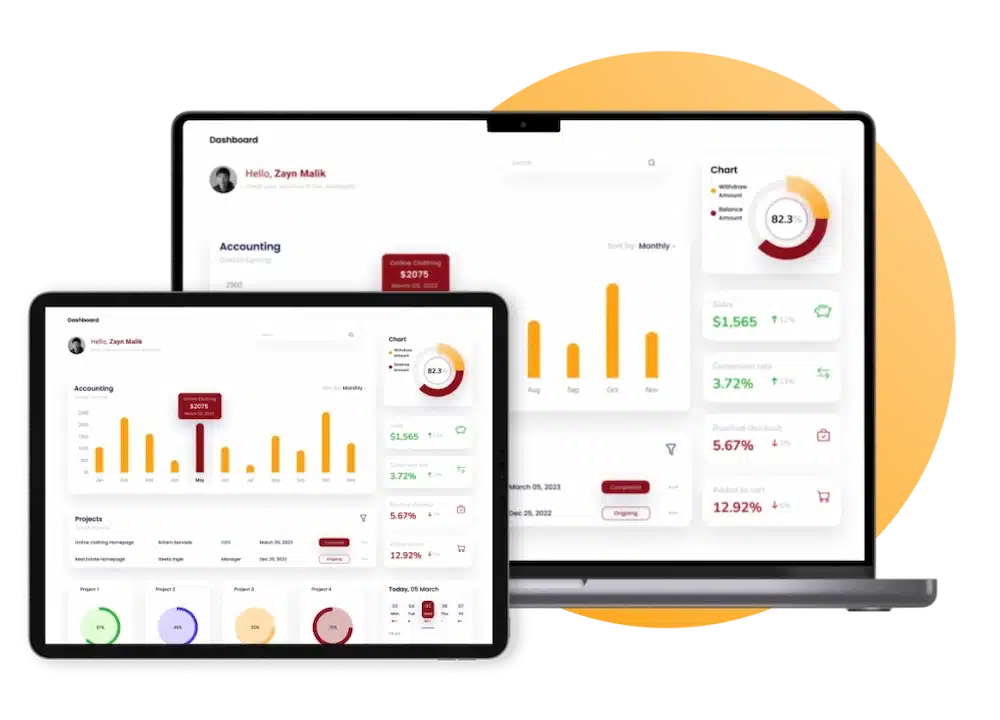What is Business Process Reengineering (BPR)?

Business Process Reengineering (BPR) is a game-changing strategy that completely overhauls a company’s core processes. This enables businesses to deliver better products and services. Unlike small tweaks that improve existing processes, BPR starts from the ground up, redesigning the company’s setup to meet modern goals and new technologies effectively.
While BPR can bring about significant transformations by rethinking and merging roles and reallocating tasks to eliminate unnecessary steps, its goals are not vastly different from those of ERP system. Both aim to enhance business efficiency and performance, but BPR does so through radical changes, whereas ERP often focuses on integrating and optimizing existing processes.
Why does a Business Implement BPR?
Businesses often adopt Business Process Reengineering (BPR) when facing significant operational challenges or spotting opportunities for substantial improvements. Common motivations include cutting costs, enhancing service quality, accelerating production, and complying with new regulations.
BPR is especially attractive for companies grappling with outdated, inefficient legacy processes. For example, a Filipino retail company combating fierce competition from online outlets might implement BPR to overhaul its supply chain and customer service operations to boost both speed and efficiency.
Similarly, in sectors like manufacturing or telecom—where rapid technological shifts can outdate current processes—BPR offers a strategic framework to innovate and maintain a competitive edge.
The Steps of Business Process Reengineering
Business Process Reengineering (BPR) begins with a detailed mapping of the current process landscape to understand workflow dynamics and identify any inefficiencies or bottlenecks. These seven steps are the basis of business process reengineering:
- Identify the Process to Re-engineer: Select which process requires improvement based on inefficiencies or strategic importance.
- Analyze the Process: Thoroughly examine the current process to understand pain points, inefficiencies, and areas for improvement.
- Redesign the Process: Create a new, optimized version of the process that addresses the identified problems and aligns with business goals.
- Test the New Process: Run trials of the redesigned process to ensure it functions as expected and achieves desired improvements.
- Implement the New Process: Fully roll out the new process across the organization, ensuring that all involved parties are aligned.
- Monitor and Evaluate: Track the performance of the new process, gathering data to measure its effectiveness and impact.
- Continuous Improvement: Regularly assess the process and make incremental improvements to adapt to changing needs and maintain efficiency.
This structured approach ensures that changes are not only planned but also strategically implemented, allowing organizations to achieve the desired efficiency and effectiveness from their BPR initiatives.
When Should You Consider Business Process Reengineering?
Business Process Reengineering (BPR) proves most advantageous during significant change or when companies realize their processes lag in efficiency. Key indicators for BPR—like high costs, slow responses, customer dissatisfaction, and shrinking market share—signal the need for a strategic overhaul.
For instance, if a company finds product delivery times causing customer frustration and lost sales, BPR could streamline these processes. Similarly, as businesses expand into new markets, BPR helps reconfigure operations to accommodate growth and enhance scalability.
Benefits of BPR
Business Process Reengineering (BPR) brings about transformative benefits, chiefly a marked boost in operational efficiency. Through the elimination of redundant and inefficient processes, companies not only cut costs but also redirect savings to bolster other business areas.
- Customer Satisfaction: Improved service speed and quality through BPR heighten customer satisfaction, essential for loyalty and brand enhancement.
- Business Scalability: BPR enhances a company’s ability to scale and adapt swiftly to market changes, crucial in dynamic sectors like technology.
- Risk Reduction: By standardizing processes and removing outdated practices, BPR significantly lowers the risk of errors and non-compliance, which is particularly beneficial in industries with stringent regulatory requirements.
- Innovation Facilitation: BPR fosters an environment conducive to innovation by freeing up resources and encouraging creative approaches to process management, helping businesses develop new products or services more effectively.
This adaptability proves critical for Philippine businesses aiming to stay ahead in rapidly evolving markets. By integrating BPR, companies position themselves to navigate future challenges and seize new opportunities with agility and confidence.
Common Uses of Business Process Reengineering

Business Process Reengineering (BPR) is a versatile strategy that applies across various industries, enhancing efficiency from manufacturing to services. These are some of the commonly used Business Process Reengineering:
- Manufacturing: Streamlines production, reduces waste, and improves time to market.
- Banking: Automates processes like loan processing, significantly cutting down approval and disbursement times, which boosts customer satisfaction and operational efficiency.
- Telecommunications: Enhances service delivery by simplifying customer interaction processes, and improving response times and service quality.
- Digital Transformation: In the Philippines, BPR facilitates the digitization of operations, allowing traditional businesses to modernize and compete more effectively in a digital economy.
The adoption of BPR has proven transformative for many Philippine businesses, driving significant improvements in operational efficiency and customer engagement.
Best Practices for Implementing Business Process Reengineering
Successfully implementing Business Process Reengineering (BPR) requires adherence to key best practices. Initially, thorough planning and detailed analysis are crucial; these steps ensure that businesses fully understand their current operations, enabling informed decision-making about necessary changes.
Moreover, setting clear success metrics before launching BPR helps businesses track progress and make timely adjustments. Effective communication with all employees is also essential; it clarifies the reasons for changes and illustrates the benefits of new processes, fostering support and easing the transition.
Challenges and Pitfalls of Business Process Reengineering
While Business Process Reengineering (BPR) offers numerous benefits, it also comes with significant challenges. To overcome this, effective change management strategies are essential, including training and clear communication of new process benefits.
- Integration Complexities: Properly integrating new processes with existing systems often requires significant technological upgrades, which can be costly and time-consuming.
- Increased Complexity: Initially, reengineered processes may increase in complexity, leading to potential confusion and operational errors.
- Cultural Adjustments: BPR can lead to significant shifts in corporate culture, potentially disrupting internal dynamics and requiring careful management.
- Continuous Improvement Demands: After implementing BPR, organizations must commit to ongoing evaluation and improvement, which demands additional resources and constant attention.
Effectively managing these challenges is crucial for leveraging the transformative potential of BPR, allowing businesses to enhance efficiency and remain competitive in dynamic markets.
The History of Business Process Reengineering
Business Process Reengineering (BPR) originated in the early 1990s, pioneered by Michael Hammer and James Champy. Since then, it has evolved with technology, integrating digital tools to enhance process efficiency and integration. Today, modern BPR frequently integrates digital tools and sophisticated software solutions, enhancing the efficiency and integration of business processes.
BPR and ERP solutions are closely linked; ERP helps BPR by automating and organizing business processes, making redesigns and implementations more effective. In the Philippines, BPR adoption follows global trends, using technology to stay competitive and adapt to changes. As businesses grow and meet new challenges, BPR keeps processes efficient, cost-effective and focused on customers, often using advanced ERP marketing solutions to encourage ongoing optimization and innovation.
HashMicro’s Business Process Reengineering Software To Automate Your Business

HashMicro’s ERP system serves as an ideal replacement for traditional Business Process Reengineering (BPR). By automating key business processes, streamline operations, eliminate inefficiencies, and enhance overall productivity.
- Automated Workflows: Streamlines procurement processes, reducing inefficiencies and manual errors.
- Inventory Optimization: Automates inventory management to enhance efficiency and reduce waste.
- Data-Driven Decision Making: Provides insights for performance tracking and informed decision-making.
- Process Automation: Optimizes production scheduling to improve efficiency and reduce delays.
- Real-Time Monitoring: Tracks and manages asset utilization to optimize operational efficiency.
With these features, HashMicro can help businesses automate and optimize their processes, eliminating the need for complex reengineering. By leveraging advanced automation tools, companies can boost efficiency, reduce costs, and focus on growth.
Conclusion
Business Process Reengineering (BPR) offers a game-changing solution for Philippine businesses aiming to boost efficiency and stay competitive. By rethinking and redesigning core processes, companies can drive performance, enhance customer satisfaction, and reduce costs.
For Filipino business owners ready to transform their operations, BPR provides a clear path to success and growth. As highlighted in this article, the potential benefits of BPR are vast, offering the opportunity to future-proof your business in today’s fast-paced market.
Ready to take the next step? Book a free demo with HashMicro’s ERP system today! Discover how automating your processes can lead to greater efficiency, cost savings, and long-term success!
Frequently Asked Questions
-
What is BPR approach?
Business Process Reengineering (BPR) is a strategy focused on radically redesigning core business processes for efficiency and productivity. It involves starting from scratch to create more streamlined, cost-effective operations that better meet business goals.
-
What is ERP vs BPR?
ERP integrates and automates existing business processes through software, improving workflow across departments. BPR, on the other hand, involves completely rethinking and redesigning processes, often from the ground up, to achieve major performance improvements.
-
What is the purpose of business process reengineering?
BPR’s purpose is to improve efficiency, reduce costs, and enhance customer satisfaction by completely redesigning business processes. It helps companies eliminate redundancies and adopt modern workflow automation.






































